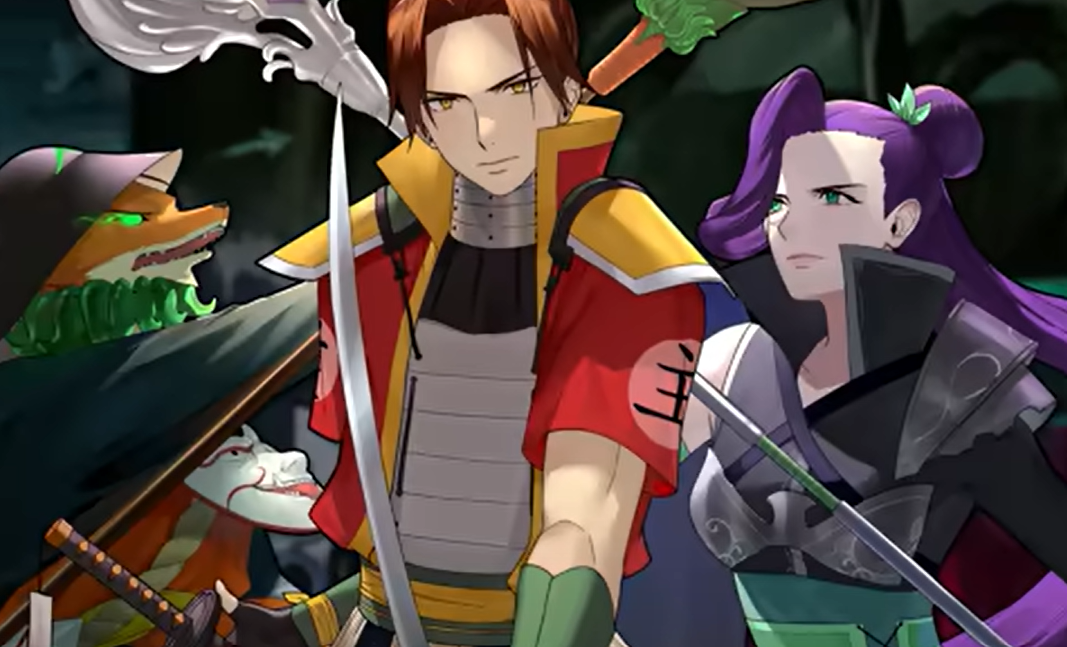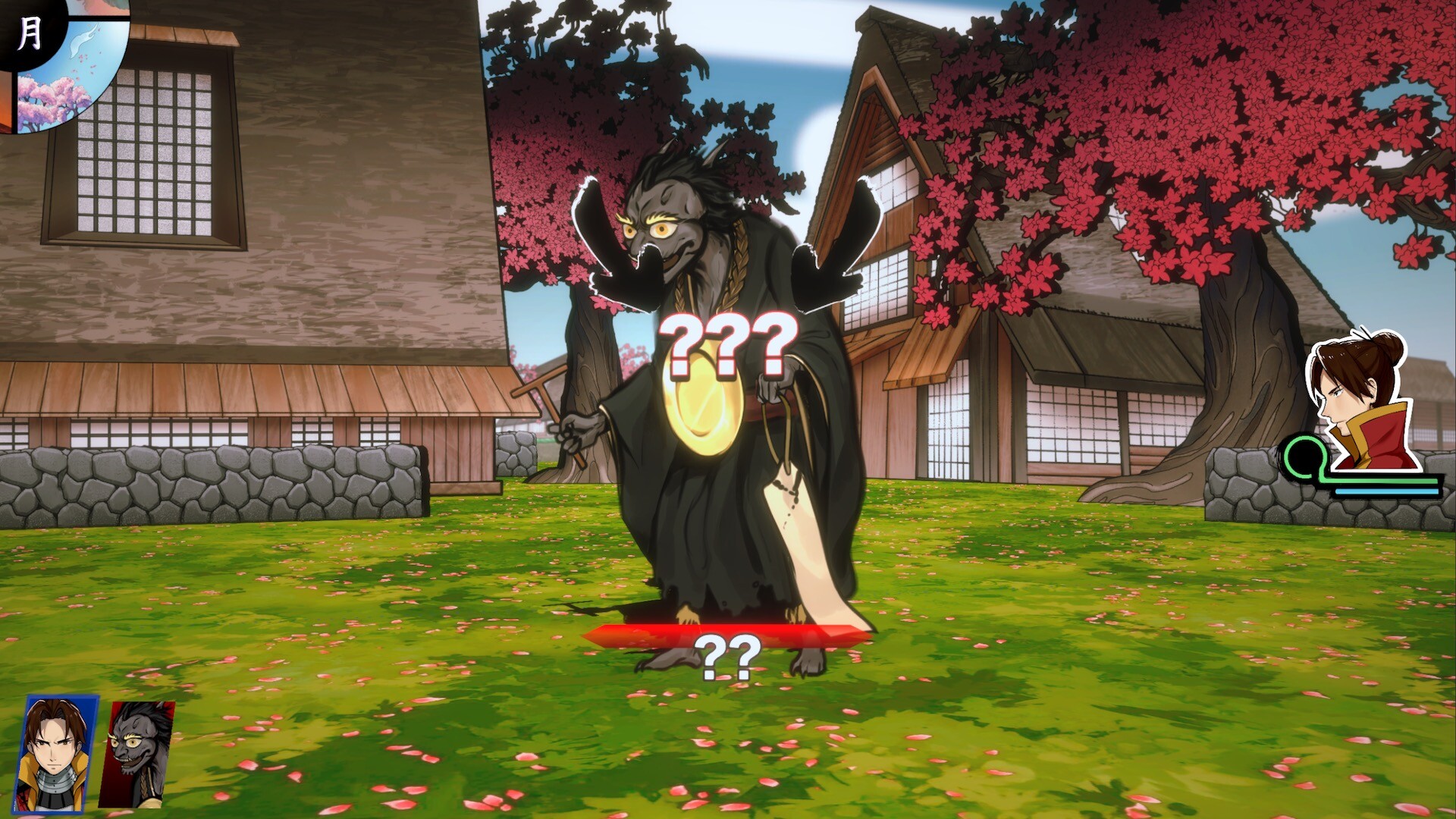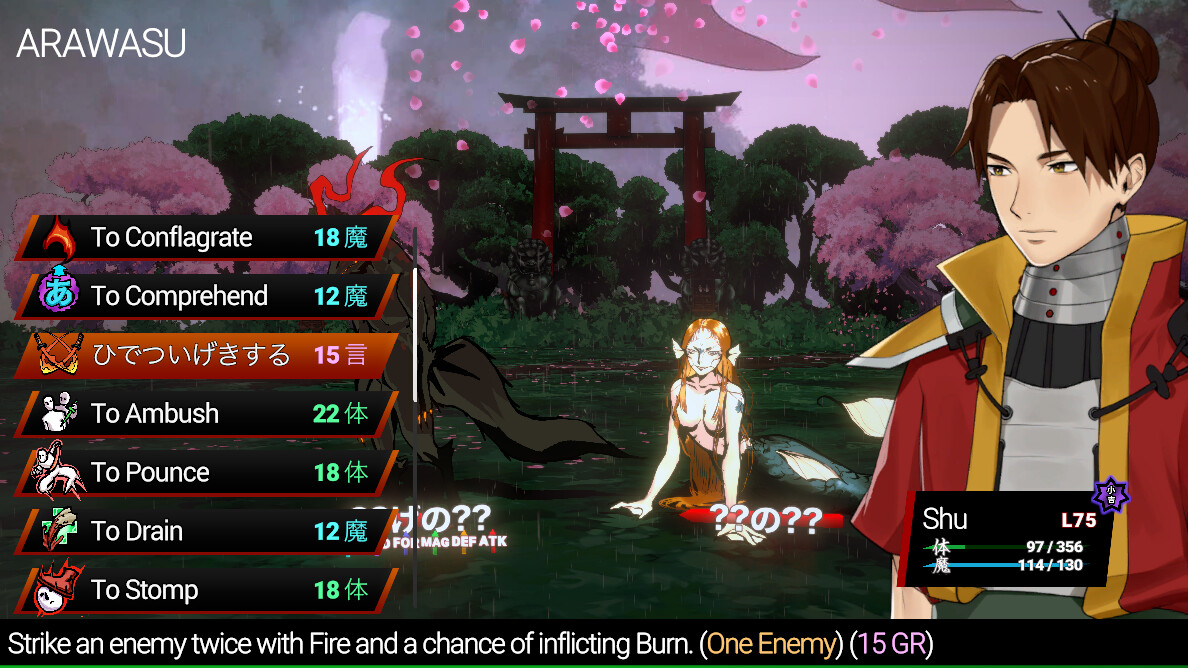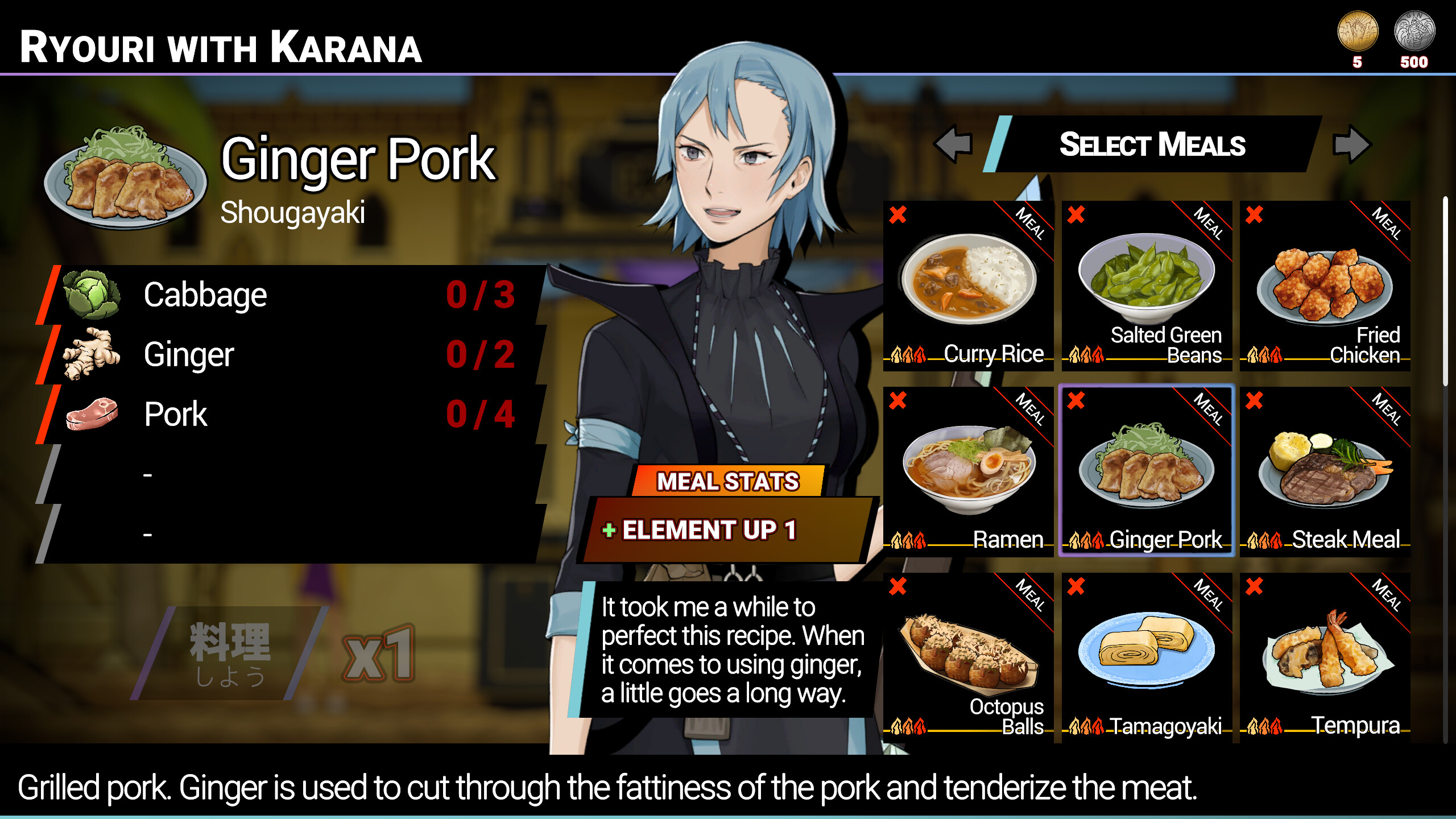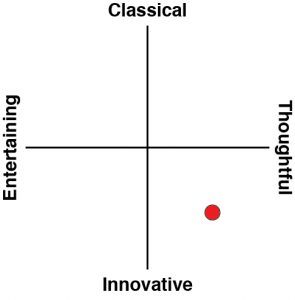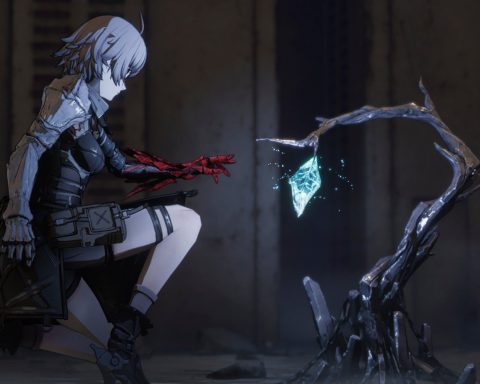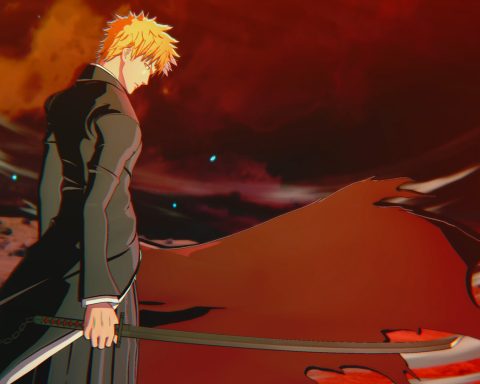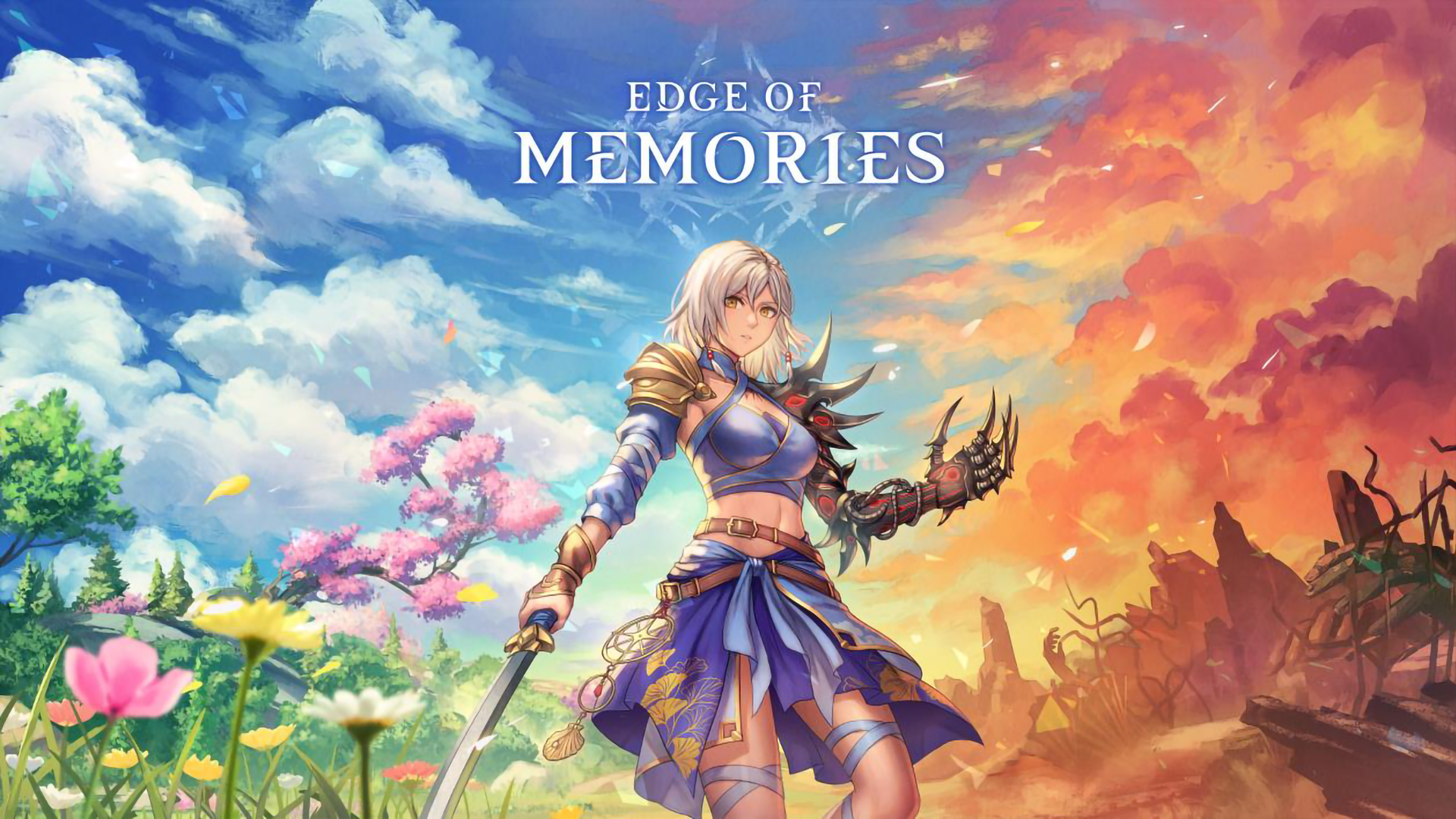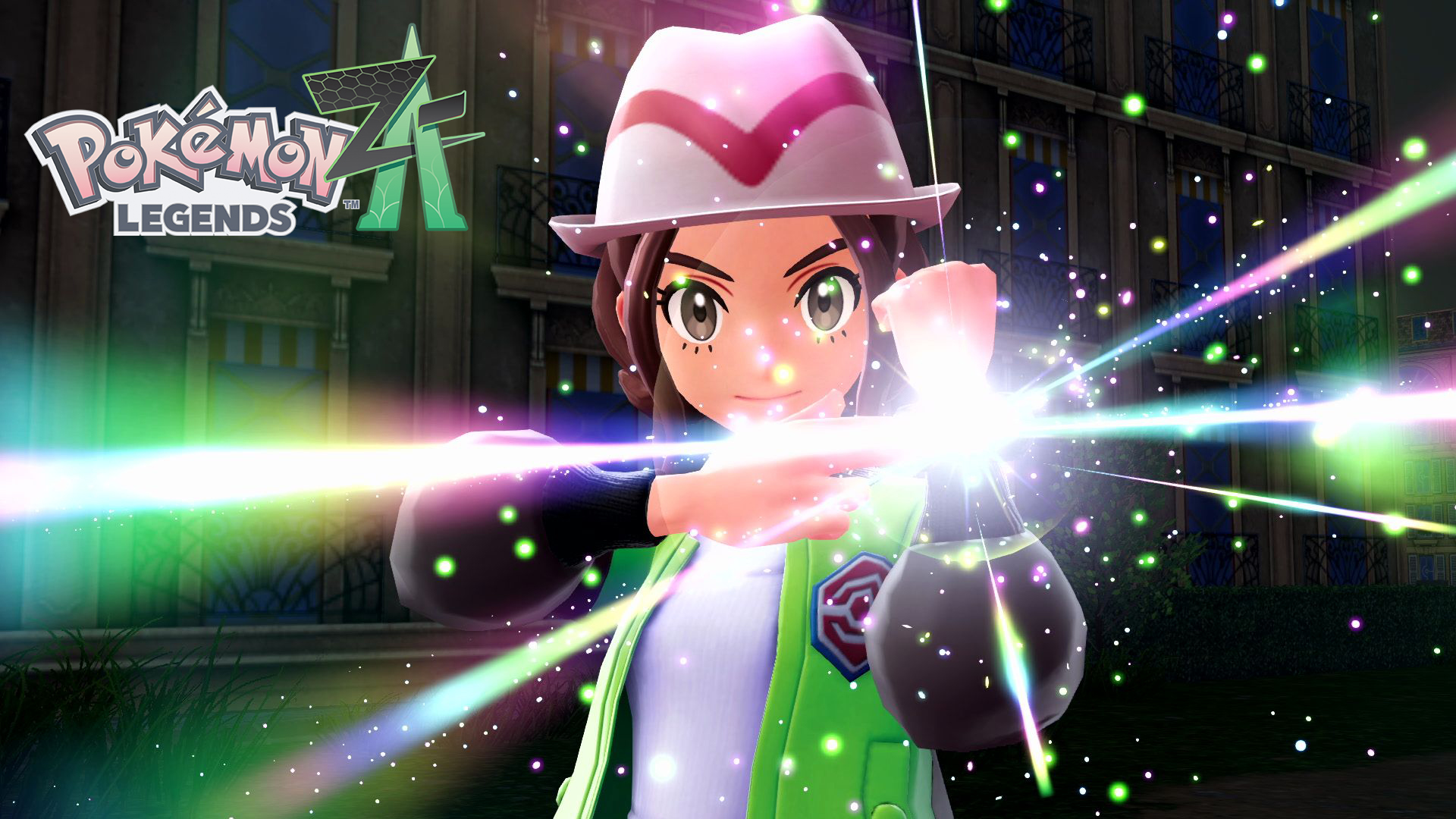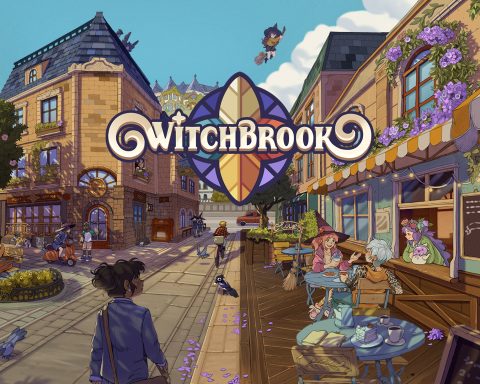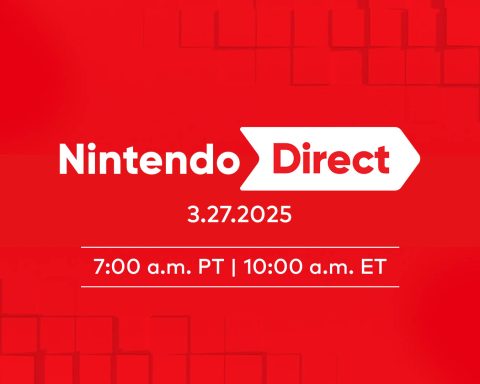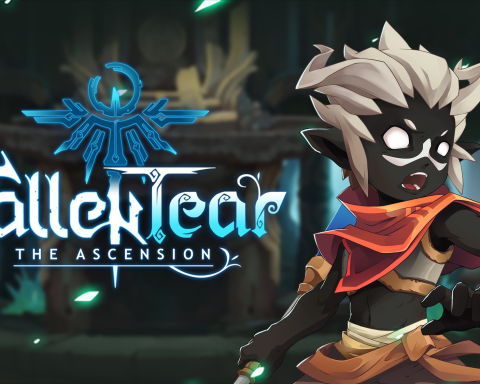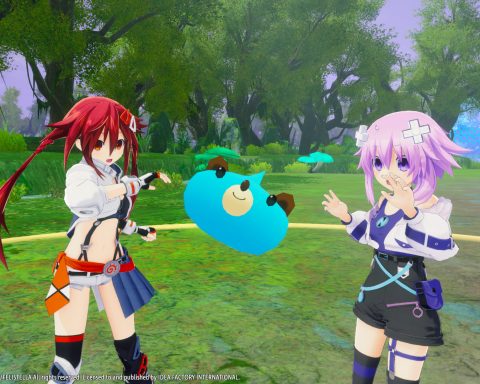The best way to learn a new language is to actually practice that language in real-world context. If you travel around Japan you will, at some point, almost certainly be accosted at least once by a group of school kids who are clutching a workbook and told to practice their English on a gaijin. Because having a single, short conversation in English is better learning than spending hours reading textbooks. Or Duolingo.
“The best way to learn a language is to immerse yourself in it” isn’t just a folksy saying. There is evidence that it provides a quicker pathway to learning the language than textbook learning, because it puts the language in context. You’re actually using the words and speaking style of the actual people with immersion. Anyway. All of this is a lengthy intro to say that of all the many “language learning” games I’ve played Shujinkou is the one that “gets it” the best. And that’s precisely because it eases you into Japanese using it in context.
Shujinkou is, first and foremost, a dungeon crawler inspired (predominantly) by Etrian Odyssey. Yet somehow it’s also even more fully featured. It’s a real and proper game, too, not one of those flimsy and cheaply made things that most “educational” games get layered over. It offers a multitude of systems and dungeons that are interesting to explore. You play as a retired samurai who needs to un-retire himself as Oni demons start attacking the local town. Because the game is there to teach, it actually has more of a narrative than most dungeon crawlers. Oh, and it’ll take you 70 or so hours to play through. This thing has substance, is the point.
I don’t think the developer QUITE nailed the execution, especially since the front end of the thing features so many tutorials thrown at you at a rapid rate. What’s more, those tutorials are old-school PowerPoint presentations, rather than interactive things, so the induction is likely to be at least mildly confusing to most players until they have taken the time to immerse themselves within the game itself and mess around with the systems personally. Irony!
However, remembering that the game is only half the experience, the other side of Shujinkou makes its slight lack of mechanical refinement more than forgivable. I tried using video games as a way of learning Japanese, but playing a game in full Japanese is like trying to go from 0 to 100 in no time flat. Shujinkou takes a more gradual approach, starting by simply having menu items flip from English to Japanese when you highlight them. A menu will pop up with “Yes” and “No” but when you highlight those boxes they’ll become “Hai” and “Iie” respectively. Meanwhile, in dialogue the occasional word will be highlighted blue, and that allows you to pop up the Japanese translation of the word so you can learn it, its hiragana or katakana spelling, and whatever kanji is involved.
This use of language and instruction slowly ramps up as you get deeper into the adventure. Meanwhile, in-game you’ll collect orbs that have hiragana and katakana characters in them. You can use those orbs to power up your attacks against enemies whose names are spelled using the same characters as depicted on the orbs. It’s a very clever way to start to familiarise yourself not only with the character, but also they work in the Japanese language.
Of course, you don’t have to actually learn anything if you don’t want to. There’s a slider that goes from “no Japanese” to “proficient in Japanese” (i.e. it’s going to be mostly Japanese), which acts as a language difficulty setting of sorts. It’s a testament to the quality of the game that it holds up perfectly well if you don’t want to be educated by it at all, but if you do take it seriously, it’ll actually progress you pretty far down the path to proficiency all by itself.
With that said it is very clear that Shujinkou was made on a shoestring budget, and is barely able to be coherent to its vision. Ironically for a game about learning a language, the English translation has issues, and the spelling of several Japanese words in English is unconventional and likely to confuse people trying to also learn over Duolingo or some other resource. The art is a mixed bag with human characters tending to be less stand-out than the monsters and dungeon environments. The UI isn’t quite clear enough, and that can make navigating menus more difficult than it needed to be. The plot itself struggles to maintain a consistent tone and the characters are overall quite flat. None of this is to criticise the game – it’s an indie project that the developer has truly thrown themselves into so on a purely emotional basis it’s easy to see the less professional edges as charming.
In fact, the little note that the developer wrote to their sadly passed mother that pops up on the screen at the start perfectly encapsulates what this project is: Something that truly mattered to the developer. Through all the issues that I’ve mentioned in this review, that fact shines brightly throughout.
Shujinkou is a genuinely worthwhile language tool wrapped up in a genuinely worthwhile indie Etrian Odyssey-style dungeon crawler. It’s an inspired, intelligent idea and I hope people give it a chance despite being as indie as they come. On sheer ambition and creative energy, I would be hard-pressed to point to anything I have ever played that’s more impressive than this.
